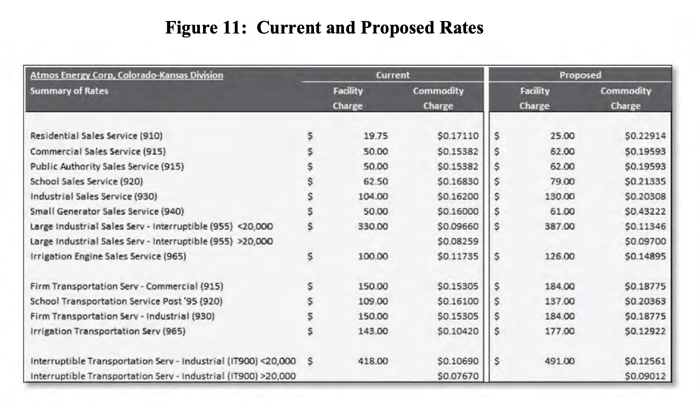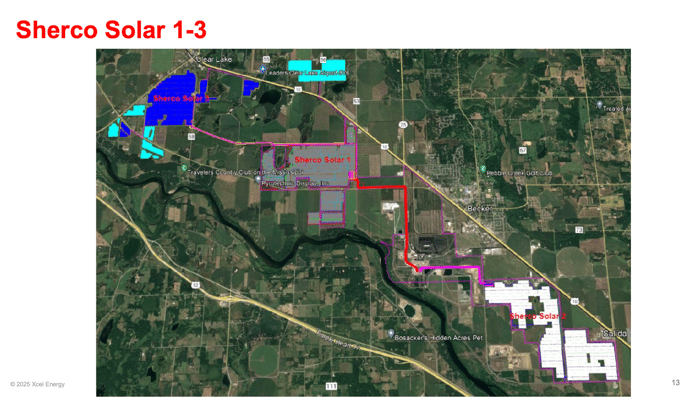What's Happening in Energy highlights the most interesting findings from public utility commission filings.
What's Happening in Energy highlights the most interesting findings from public utility commission filings.
Subscribe below to get these insights delivered straight to your inbox:

What's Happening in Energy — Aug1
Powered by Halcyon
__
Let’s begin in Mississippi, where Entergy Mississippi (EML) has shared details about the second of three “block load” additions to support the construction of AWS data centers in Madison County. The second block consists of a new 230 kV substation at the southern end of Madison County called the “Cosmos Substation,” supporting the “Madison County Mega Site.” With an initial estimate of $73 million out of a total $400 million for the entire three-block load expansion, the Cosmos project would “reduce line routing by the Customer of their 34.5 kV distribution line facilities from the substation fence line to their facilities. The Customer will take ownership at the point of demarcation located inside of the substation fence line at 34.5 kV on designated structures designed, owned, operated, and maintained by EML.”

__
We love a good handwritten work log, so this week in Nevada, we give you NV Energy’s application to recover costs associated with their Natural Disaster Protection Plan. The Bureau of Consumer Protection submitted exhibits of invoices and handwritten activity logs provided by NV Energy, including activity logs from Lincoln County Fire District detailing the work schedule to clear brush near utility poles (“pole grubbing”) and grind vegetation (“mastication”) to mitigate wildfire risk. See a few of the handwritten logs below and check out the safety briefing in the first document: “Working in the cold.”


__
The Midcontinent Independent System Operator (MISO) has issued a request for proposals for transmission developers to “construct, own, operate, and maintain” three facilities: Woodford County Substation, a one-mile 765 kV transmission line from Woodford Substation towards the Collins Substation, and a 765 kV transmission line to connect Woodford Substation to the Illinois-Indiana border.
The three facilities together are referred to as the “Woodford County – IL/IN State Line 765 kV Competitive Transmission Project” or “WIIL.” MISO has also released a diagram showing the segments that are open to competition. All other adjacent transmission infrastructure will be constructed by Ameren Illinois (AmerenIL), Commonwealth Edison Company (ComEd), MidAmerican Energy Company (MEC), or Northern Indiana Public Service Company (NIPSCO).

__
In Kansas, Atmos Energy requested a $19.1 million base rate revenue increase, equating to an average $9.12 monthly bill increase (absolute) and a 29.3% increase (relative). According to Atmos, the need to invest in maintenance expenses, such as leak repairs and pipeline replacements, and the general cost increases, combined with deficiencies in recouping a reasonable rate of return, necessitate new rates for a sprawling system encompassing rural areas.
The rate increases would tweak customer class rates to more accurately reflect the cost of service. According to supporting testimony, “This results in a gradual improvement in alignment between class revenues and class cost of service, while tempering customer impacts.” Blurry rate tables below.


- Docket profile
- Testimony on cost allocation
- Testimony on Tax Rider Tariff
- Overview testimony on rate increase
____
The Hawaii Public Utility Commission approved Maui Electric Company’s request to increase allowable costs associated with federal tariffs on battery components to finance the Waena Battery Energy Storage System. Initially, the Commission approved cost recovery through the Exceptional Cost Recovery Mechanism (EPRM) at the lesser of the actual capital costs or 5% greater than the estimated capital costs, and actual O&M costs or 5% greater than estimated O&M costs.
But, customer rate increases (and federal tariff uncertainty!) intervene, so to speak, and the PUC has re-calculated eligible recovery:
"(1) the lesser of either the actual capital costs or twenty percent over the approved estimated capital costs ($82,060,000); and
(2) the lesser of either the actual O&M costs, as calculated annually, or the current estimated O&M costs, as of June 23, 2025.”
Quote: “The Commission has carefully considered the difficulty of the Company’s situation and the potential impact of this decision to limit cost recovery. However, the Commission finds that such a decision represents a fair balance of the previously stated risks to the Company and the ratepayers.”
Read the approval with a history of the proceeding and the arguments below.
__
In Wisconsin, a vignette of transmission undergrounding. American Transmission Company responded to a Public Service Commission data request on the feasibility of undergrounding 4.2 miles of its proposed Northern Adams County Area Network Improvement Project nine-mile kV transmission line. The Company included a graph comparing the land impact of the undergrounded line segment versus the above ground segment as proposed in the application for the Certificate of Authority.

The big deal, of course, is cost. Despite the apparent reduction in land impacts by acreage, ATC discouraged the modified undergrounding proposal, estimating that the underground installation itself would cost $66.9M compared to the total estimated cost of $41.3M for the entire project. The Company also detailed its concerns in the passage below.

And not important, but “Northern Adams County Area Network Improvement Project” is crying out for an acronym: NACANIP.
____
It’s not often that we see new hydropower feasibility studies! Although it’s only 12.5 megawatts, it’s still significant! In Alabama, FERC notified the Alabama Public Service Commission that Bevill Hydroelectric, LLC, applied for a preliminary permit “proposing to study the feasibility of a hydropower project to be located at the U.S. Army Corps of Engineers' (Corps) Tom Bevill Lock and Dam, on the Tennessee Tombigbee Waterway, near the City of Pickensville, Pickens County, Alabama.” The notice emphasized that the preliminary permit would not allow the company to disturb any land but would grant them “priority” to apply for a license. Additionally, the notice provided a detailed description of the project’s physical dimensions and the associated transmission line.

__
In Nebraska, the Southwest Power Pool (SPP) submitted the executed Generator Interconnection Agreement (GIA) to (FERC). This agreement is between SPP, acting as the Transmission Provider, Pierce County Energy Center as the Interconnection Customer, and Nebraska Public Power District (NPPD). SPP submitted the GIA to FERC because the agreement contains unique provisions relevant to NPPD’s “unique status under Nebraska state law.” The Pierce County Energy Center consists of “of sixty-two (62) GE 3.571 MW solar inverters and fifty-six (56) GE 3.6 MW solar inverters for a total generating nameplate of 423 MW.”
Additionally, the GIA includes detailed breakdowns of the estimated network upgrade costs…and an estimated lead time of five years.





__
An Xcel Energy two-fer. First, in North Dakota, Xcel subsidiary, Northern States Power Company, received approval to issue refunds related to its share of nuclear production tax credits. The total amount for these refunds is $12,384,805, translating to an average of $53.83 per residential customer, which the Company will begin crediting over the course of 12 months, starting in August. The application was filed in mid-May, and has just been approved.

__
And in Minnesota, Northern States Power Company delivered an early June presentation on its site transition plans for two retiring coal plants, Sherco and King Plant.
Planned for Sherco? As much as 710 megawatts of solar.

Planned for King Plant? A Rondo Energy ‘grid-level storage’ installation that can also provide “industrial quality steam.”

The presentation on plans for transitioning the Sherco site included a map overview and budget breakdown of the proposed Sherco Solar projects, which would total 710 MW of power when the final project is completed.

The Sherco presentation also included updates on its proposals to build 180-mile 345 kV transmission lines to connect “wind-rich southwest Minnesota with existing grid connections at Sherco plant,” two 210 combustion turbines and a synchronous condenser in Lyon County, a natural gas-hydrogen production and blending facility at Sherco, and a 10 MW/100 hour long-duration battery in partnership with Form Energy.
.png?width=50&name=34C0AE28-DE08-4066-A0A0-4EE54E5C1C9D_1_201_a%20(1).png)

